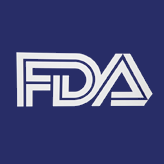FDA Approves Dinutuximab (Unituxin) for Pediatric Neuroblastoma
The US Food and Drug Administration has approved dinutuximab (Unituxin) for the treatment of high-risk neuroblastoma in pediatric patients.
Dinutuximab becomes the first drug approved for high-risk neuroblastoma

The US Food and Drug Administration (FDA) has approved the chimeric monoclonal antibody dinutuximab (Unituxin, United Therapeutics Corporation) for the treatment of high-risk neuroblastoma in pediatric patients. Neuroblastoma, which develops from immature nerve cells, often starts in the adrenal glands but can also develop in the spine, abdomen, or chest.
The drug is intended for patients who have responded to prior first-line therapy.
“Unituxin marks the first approval for a therapy aimed specifically for the treatment of patients with high-risk neuroblastoma,” said Richard Pazdur, MD, director of the Office of Hematology and Oncology Products in the FDA’s Center for Drug Evaluation and Research, in a press release. “Unituxin fulfills a critical need by providing a treatment option that prolongs survival in children with high-risk neuroblastoma.”
The study that led to the approval was a multicenter, open-label trial conducted by the Children’s Oncology Group that included 226 patients with high-risk neuroblastoma. Patients were randomized 1:1 to 6 cycles of treatment with either the oral retinoid drug isotretinoin alone, or dinutuximab, interleukin-2, and granulocyte-macrophage colony-stimulating factor plus isotretinoin. Patients in the trial had a median age of 3.8 years (11 months to 15 years).
Patients in the trial had all responded to prior therapy for newly diagnosed disease, including chemotherapy, radiotherapy, surgery, and autologous stem cell transplant.
Results of the trial showed improved survival in patients treated with dinutuximab. An interim analysis demonstrated an improvement in event-free survival for patients treated with dinutuximab (hazard ratio [HR] = 0.57; 95% confidence interval [CI], 0.37–0.89; P = .01). An overall survival analysis also demonstrated an improvement for patients treated with dinutuximab (HR = 0.58; 95% CI, 0.37–0.91). At the time of this analysis, median overall survival had not been reached in either arm. An updated survival analysis found that 73% of patients treated with the dinutuximab combination were still alive compared with 58% of patients treated with isotretinoin alone.
The most common adverse events (≥ 25%) in patients enrolled in the dinutuximab arm of the trial were increased alanine aminotransferase and aspartate aminotransferase, anemia, capillary leak syndrome, diarrhea, hives, hypoalbuminemia, hypocalcemia, hypokalemia, hyponatremia, hypotension, infusion reactions, neutropenia, pain, pyrexia, thrombocytopenia, and vomiting.
The most common serious adverse events (≥ 5%) were capillary leak syndrome, fever, hypokalemia, hypotension, infections, infusion reactions, and pain.
Dinutuximab carries a boxed warning as the drug causes severe neuropathic pain. Treatment with intravenous opioids is necessary before, during, and after dinutuximab infusion. The drug can also cause nerve damage and life-threatening infusion reactions, electrolyte abnormalities, bone marrow suppression, infections, and eye problems.